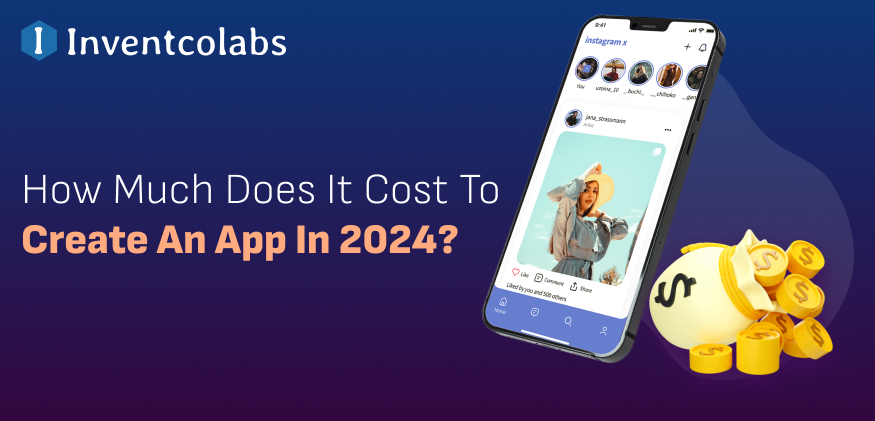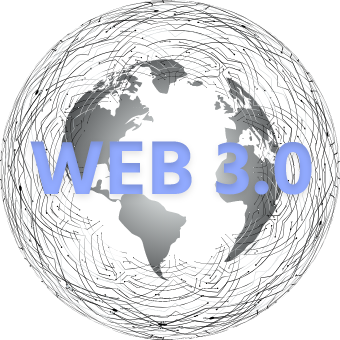The Internet of Everything (IoE) is a wide phrase that refers to technologies and consumer items that are connected to the internet and equipped with digital functionalities. It’s a way of thinking about the future of technology that envisions a vast network of interconnected products and appliances.
The Internet of Everything (IoE) is a term closely related to the Internet of Things (IoT).
Overview Of Internet Of Everything (IoE)
The Internet of Everything, or IoE, is a term that refers to a networked world in which billions of gadgets and consumer items are interconnected and have access to advanced digital capabilities. The Internet of Everything (IoE) is predicated on the assumption that in the future, computer networks will not be limited to laptops or personal computers and a few tablets. Rather, machines will grow more intelligent as a result of increased data availability and networking options.
Modern IoE applications span from digital sensor tools to AI-enhanced and connected mobile devices that have lately become more sophisticated and automated. It is possible to classify the aspects of IoE in two ways:
Input
This allows for the input of analog or external data into a piece of machinery.
Output
This allows for the reintegration of hardware to the internet.
As of today, only smartphones, PCs, and a few other gadgets have access to the internet, but the theory behind the Internet of Everything is that in the coming days, devices will become more sophisticated and cognitive because they will have access to more data.
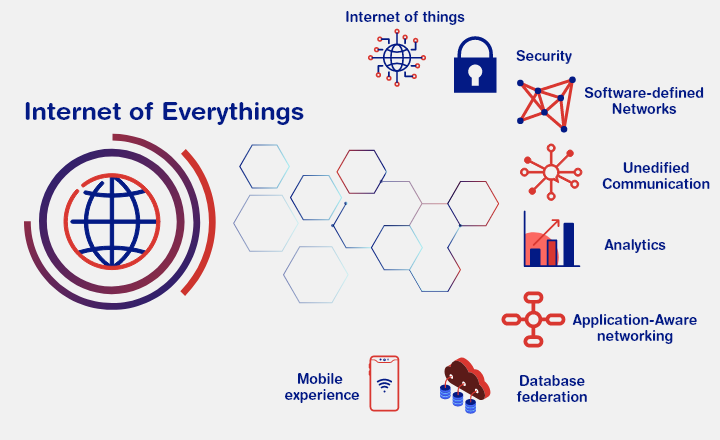
To put it simply, the Internet of Everything is the intelligent linking of people, organizations, and data that will revolutionize our society in such a manner that there will be billions of linked devices with sensors to detect, monitor, and retrieve their status, all of which will be connected through a shared network built on common protocols like TCP/IP.
Internet Of Everything (IoE) Vs Internet Of Things (IoT)
The Internet of Things (IoT) and the Internet of Everything (IoE) are often interwoven, but it’s crucial to grasp the differences between the two. It is the pillars of the principles that differentiate the Internet of Things development from the Internet of Everything development.
The IoT is primarily concerned with tangible items.
People, things, data, and processes all play a role in the IoE.
When it comes to interconnectivity, the phrase “Internet of Things” refers to the interconnection of physical things and data input/output, while “Internet of Everything” refers to the interdependency of numerous technologies and activities. Despite these distinctions, they have the following similarities:
Decentralization – Both technologies are dispersed and lack a central administration; each node functions as a mini-management center capable of doing specific roles autonomously.
Data Breach Vulnerability – The more devices linked to the network, the more exposed it becomes to data breaches and other attacks.
Components Of The IoE
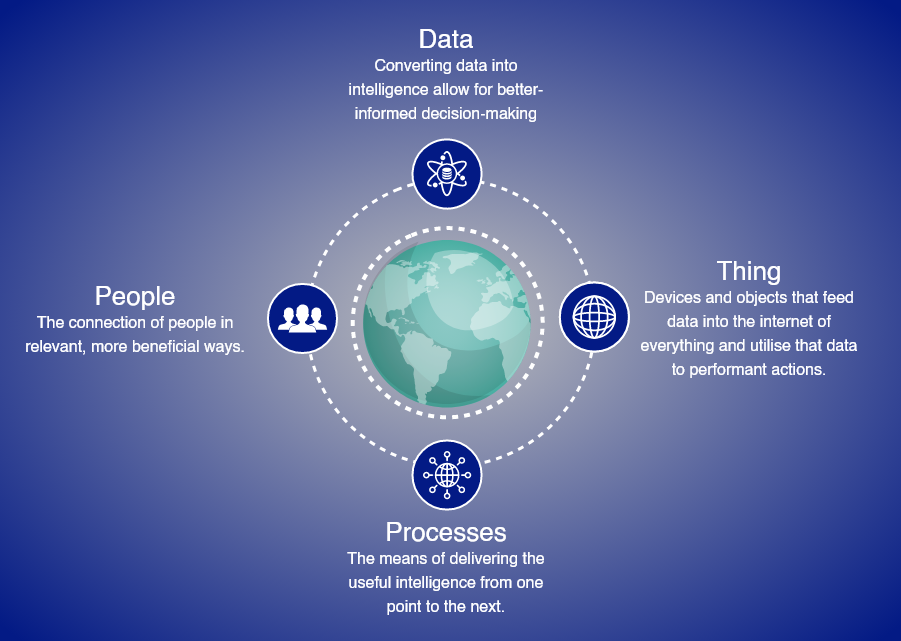
People
Humans will be more directly connected to the web and will generate data and interact with gadgets not only through mobile phones/tablets, personal computers, and social media but rather through sensors implanted on human skins or stitched into clothes that offer vital signs. People will become internet nodes in this manner.
A notable example is Nike’s fitness tracking bands, which can read a person’s physiological parameters, as well as sports equipment loaded with chips that can track the athlete’s performance.
Things
The Internet of things refers to a network of physical objects that are connected to the internet or each other, as well as to their environment, allowing them to be more intelligent, contextually aware, and cognitive.
In 1984, there were only 1000 internet-connected devices. By 1992, that number had risen to roughly 1 million, and by 2010, it had reached 10 billion. Cisco projects that by 2020, there will be over 50 billion internet-connected devices. In order to make smarter judgments, these gadgets will collect data from their surroundings and communicate it back to the server.
Data
Connected devices will not only gather raw data but will also provide higher-level, more sophisticated data back to their respective servers for quicker review or more informed decision-making.
The data here is primarily focused on providing actionable information rather than a random collection of numbers. Classifying and analyzing data will become increasingly important as the number and variety of data sources grow. This is necessary in order to get actionable insights from all of the data.
Process
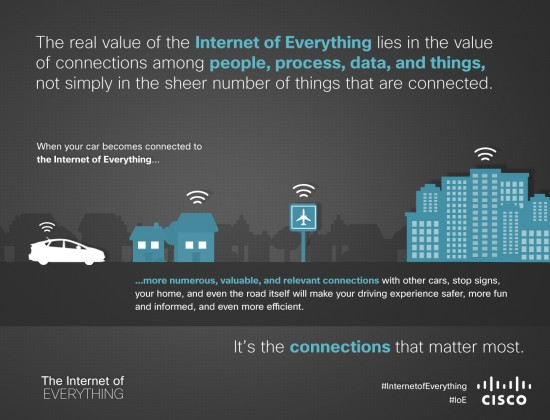
Information will be sent in a timely and effective manner to the appropriate recipient using a mechanism similar to that used in IOEs. Technology-based businesses will be depending more on data to make future decisions and develop their operational procedures or strategies, and thus they will be trying to exploit the data quicker than their competition for agile and speedier decision-making.
IoE Vs IoT: The Impact On Various Industries
Healthcare
The IoE’s effectiveness in healthcare solutions is attributed to its ability to contextualize information. Patients with Parkinson’s disease can benefit from IoE, according to IMB and Pfitzner’s study on the transformation of Parkinson’s disease care. With the aid of data mining algorithms and sensors implanted in their homes, it helps to gain a better knowledge of how the disease progresses and to take precisely focused measures.
Read Also: How To Create A Medicine Delivery Mobile App?
Retail
IoE technology has the potential to deliver the greatest advantages to retailers by allowing them to get new insights about their customers and create entirely new shopping experiences.
In retail, Jim Grubb’s Internet of Everything example is one of the best instances of how the Internet of Everything is changing the way people shop. The author describes a scene in which Jody is browsing on her phone in the toy area. Jody will get personalized service, and vendors will be able to study data to improve their promotions. And this is just one way in which the IoE contributes to a more enjoyable shopping experience.
Energy
One of the major topics in today’s globe is energy use. The IoT is helping people across the world find methods to decrease water waste and make their use wiser by replacing old, labor-intensive job models with ones that take advantage of new tech. Furthermore, the Internet of Everything has the potential to dramatically increase the efficiency of technology solutions by linking the previously disconnected and offering useful information for future enhancements.
One of the greatest examples is Cisco’s smart water conservation solution for Israel’s largest municipal water company. Leak detection acoustic sensors, valve systems, and ERP systems can all be linked to the Supervisory Datalink Procurement System via the IoE, allowing for the development of a cutting-edge water management app that can reduce non-revenue water loss while also ensuring effective water conservation.
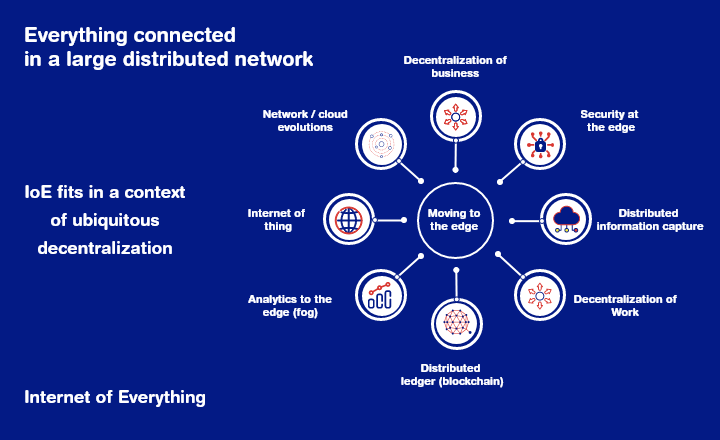
Despite the fact that the Internet of Everything has only been put to use in these three businesses, it is safe to argue that its advantages extend well beyond these three. The technology has a favorable impact in a variety of areas, including traffic control and road pricing, public services, online education; gas monitoring, and smart construction.
Real-World Illustrations Of IoE
IoE has been used in the real world in the following ways:
- Earlier in 2019, Nike released an auto-lacing shoe that can monitor a wearer’s blood pressure using sensors built in the shoe. The shoe may then be loosened or tightened on its own, without the need for human intervention.
- A municipal water system in Tel Aviv, Israel, has been outfitted with Cisco smart-water camera modules. Leaks and outlets, water levels, and pressures may all be monitored by the supervisory control room using data transmitted from subterranean pipes to the Cloud. This method might save money, avert water shortages and improve the efficiency of water users.
- Installing sensors in machinery and equipment in the industrial business allows for the precise calculation of physical coercion and monetary capital loss. As a result, erosion and downtime might be minimized by preventive maintenance. As an alternative, it could precisely determine its economic life and alert the corporation to when it was the best time to dispose of the equipment.
- Artificial intelligence (AI) can already learn about a customer’s preferences in online shopping and recommend similar items to them. Data security problems with IoE, however, limit its ability to go much farther. However, if a new mother has chips on her baby’s supplies, she would be able to identify which products deteriorate rapidly and seek out higher quality products or different suppliers.
- Artificial intelligence (AI) can already learn about a customer’s preferences in online shopping and recommend similar items to them. Data security problems with IoE, however, limit its ability to go much farther. However, if a new mother has chips on her baby’s supplies, she would be able to identify which products deteriorate rapidly and seek out higher quality products or different suppliers.
Big Data’s Significance In The Internet Of Everything
The digitalization of production has ushered in a new age of manufacturing, known in Europe as the Third Industrial Revolution and in America as Smart Manufacturing. In today’s world, information is crucial. The success of a product will be determined by the way engineering and fabrication information is created, exchanged, and analyzed.
It is the flawless functioning of every stage of the production chain that is connected by digital information, which is called “Smart Manufacturing”. Smart manufacturing simplifies the whole supply chain, from the procurement of raw materials through the final distribution of goods to customers.
It is the advancement of the industrial environment where data, infrastructure, and management development create a better, quicker, and more effective production system functioning at the greatest level of quality and output. When the actual world meets a virtual factory, it’s termed the fourth industrial revolution.
Using the concept of “smart manufacturing,” machines communicate with each other and share data throughout the production process. In order to link the customer’s wants to the supply chain, production lines, operators, and finally the consumer’s hands, organizations must apply intelligence at a completely integrated level.
When organizations begin integrating data from their operations into their production processes, they begin to enjoy some of the following benefits:
- Reduces the time to market.
- The use of dynamic demand-driven economics is made possible by this strategy.
- Increases export market share.
- Gives you an advantage in the worldwide market.
- Permits progress toward zero mishaps and performance in terms of greenhouse gas emissions.
- Utilizes the smart grid and intelligent power management.
- Rapidly responds to consumer demand.
The Challenges Of The IoE
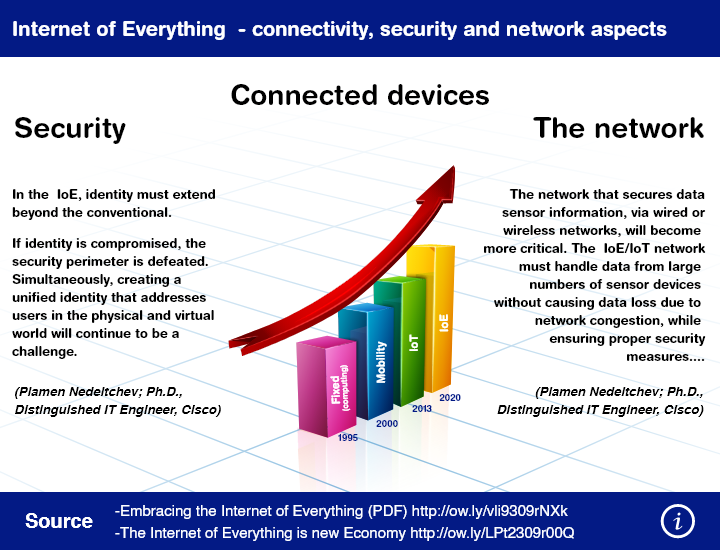
Security
The Internet of Everything (IoE) has an immense challenge here. Cybersecurity is a concern as long as data is kept on the cloud. As an example, a family may hypothetically be locked out of their own house if a smart-lock program is hijacked by hackers. In addition to this, there are several other examples of this. How terrifying would it be to have a Tesla self-driving car take off on its own and drive to an unknown destination with a passenger inside?
Privacy
Another major issue confronting IoE is privacy, which is intertwined with security. For example, have a look at smartwatches. It’s already possible for them to recognize vital signals and identify an impending heart attack. Insurance companies will be able to discriminate against you in the form of expensive blanket policies if they have access to your medical data via your wristwatch.
Compatibility
We are seeing an increase in the number of IoT devices. When it comes to hardware and software development, there are thousands of different people working on the same project at the same time. As a result, it may necessitate a higher level of management, greater IT expenses, and lengthier downtime for repairs.
Fortunately, Composable Applications do exist (CA). It’s the notion of utilizing app builders to figure out what the most helpful components are in several whole programs, and then “assemble” these blocks into one new application. This makes the integration process go more quickly.
Conclusion
IoE has the ability to fundamentally change our perspective on everything we see around us. IoE economy will generate new potential to revolutionize the world around us in education, health care, production, retail, transport, and other areas in the next several years according to Cisco.
General Electric expects that the IoE will contribute 15 trillion dollars to the global GDP, while Cisco estimates 19 trillion dollars in savings and earnings for enterprises that can harness IoE. IoE has arrived and will continue to have an impact on our lives. We need to accept this and prepare for the changes it will bring.




